A-Class: Arno Terra on Rule 8 & Max foil Span
Arno Terra must be one the most informed and experienced sailors & designers in the A-Class flying process we’ve seen last years. Together with Dna builder PJ Dwarshuis & Mischa Heemskerk they lead the path towards full foiling racing As.
One last comment I will add to this before Punta Ala: Removing Rule 8 main achievement will be leaving the entry level and older guys happy with the fact they will be able to fly in no time, (in straight line + tack&gybes extra handling hassle) without going to the long (but really fun) process on flying with current equipment.
That’s all you are going to achieve the next second you remove this rule.
Not much in fact regarding magic or winning solutions from night to Day. But a lot to measure if you keep development inside the Class and keep those wanting to enjoy flights without much hassle playing within legal environment.
All the current R&D will continue in a progressive way but you will give the chance to those with not much time to learn the new foiling techniques (which are not easy at all, although great fun involved) to stay happy within the Class while the top sailors and builders continue the pursuit of optimal flying mode with additional margin to try new designs.
Check previous post for Dutch Nats 2015 being held today and this weekend. Below Arno Terra’s view on Rule 8:
————-
————-
Arno Terra: “Rule 8 effectively limits the development of the foiling A-class. Something which frustrates many. We already see people flee to full foiling boats or boards.
I do not want give my personal opinion here, just show how rule 8 limits further development and suggest two options to overcome this.
-Rule 8 has two parts:
The put in from the top rule and the not closer than 75 cm to middle position of the daggerboard tip.
The put in from the top rule limits Moth style (active T-foils) and Flying Phantom style (uptip foils). Both type of foils lead to more stabling foiling than Z of J boards but at some cost.
With the uptip boards you have to raise the windward board to be competitive and the active boards do increase the complexity of the set-up as you need more parts.
The advantage of the active boards is the high drag to lift ratio of the foils,
which practically means that it is easy to fly upwind and do foiling gybes.
The uptip boards have excellent heave stability and are super low drag downwind when foiling but do compromise floating speed more than Z boards or active boards. To be able to fly upwind the uptip boards have to be relatively big as you get lift from only one board. Tacking boards is a hassle most people do not want.
It is also clear that the class does not want boats which are hard to launch or beach.
Not having active boards or uptip boards can be OK as we have other working solutions; the Z, JZ and J boards.
Current Z, JZ and J board show excellent downwind speed, lift-off speeds at 7 kts and sustainable foiling in 5-6 kts once foiling.
Despite this success people want more, they want to see foiling gybes and upwind foiling. These situations are effectively prevented by the 75 cm from the middle rule.
This rule maximizes the projected span to max 40 cm on each
side( (2,30 minus 1.50) divided by two).
In reality span is even less as the DNA created 33,5 cm by moving the daggerboard opening more outward. Exploder has built a Z board which bends first outwards and then maximizes span. The effective span is not bigger that way as you have to deduct the outward part of the overall span as it gives a downside force. Exploder has partially solved this by using a symmetrical vertical part and an asymmetrical diagonal part. The projected symmetrical part provides relatively less downward lift, therefore total effective projected span is somewhat increased.
For foiling gybes and upwind foiling we need more lift. We can get more lift by making the board wider and thicker, which adds a lot of drag or by making the tip longer and by that the projected horizontal span larger (which hardly adds drag). The latter solution is not legal due to the 75 cm rule.
On my 2014 DNA I had a lift-off speed of 13,4 kts. To be able to fly upwind in 3 bft I need a 12 kt or less lift-off speed and a 11 kt lift-off speed to do foiling gybes.
For a lift-off speed of 12 kts at least 25%extra lift is needed and for an 11 kts lift-off speed 50% more lift is needed.
The 50% extra lift can be created by using more span. For the DNA this would be 33,5 cm x 1,5= 50 cm span.
If we apply the Exploder low drag vertical we only need 10 cm extra span on each side. The effect on the effective righting moment is minimal as the windward board also goes more inside too. One should realize that even the windward board is increasing righting moment as it is leeward of the center of gravity when helming from the trapeze.
Not everyone is realizing that our foils are small. A DNA Z board has a projected area of 400 square cms, where a modern kite foil is at least 600 cms. Effectively the DNA is 800 square cms with both boards down but we have to lift a 75 kg boat, where a complete kiteboard including foils is an estimated 6-8 kgs.
Without extra span it is almost impossible to get all round upwind flying and foiling gybes. You would need wider and thicker boards, which are more draggy and harder too control, which makes it harder to get to the right lift-off speeds, which means even more lift is needed etcetera.
Some people have argued that builders should proof what is possible.
This is hardly fair to the builders, as you cannot expect anyone to invest in a non legal boat. Besides that, non legal solutions have been banned from official competitions sofar.
A compromise between keeping and abolishing rule 8 would be to keep the top in from the bottom rule and allow for more span.
With the option for allowing more span, more incremental innovation is possible and if someone has found the right all round solution the pack can easily adopt that.
An extra option is that the put in from the bottom rule is replaced by rule which stated that it must be possible to raise the boards in such way that the board stays only a few cms of the maximum hull depth when completely raised.
The second option is not needed but would allow more foiling options, which might scare too many people at the present though. (maybe just allow that on older boats?)
If more span is allowed, how would that effect rig and hull development, one may ask?
In a foiling cat the hulls are not just ‘placeholders’. If you drop off the foils you need the long noses and the extra volume else you would pitchpole. The hull sections can be rounder, but that will not completely shake up the field.
We have seen longer luffs and higher clews at recent foiling boats. It is unlikely we will see much shorter masts or deck-sweeping sails.
In testing I found that a shorter mast was faster in stronger winds but too much sail close the tramp was slow downwind and in lighter winds upwind. Too much disturbance close to the water and our apparent wind direction is not always as much forward as on the AC72.
With lower lift-off speeds the mast will become less soft and the sails will become a bit flatter too. (mast are less likely to break too!).
Keeping rule 8 as it is creates a deadlock solution for the class. It does not prevent foiling and it does prevent all round foiling. People (especially sailors who want to enter the class) will be reluctant to invest in new boats as they still will expect future rule changes. Opening up rule 8 with the span option will not make any boats obsolete and incremental change can happen as it always did in our development class.
————
Arno Terra for Catsailingnews.com


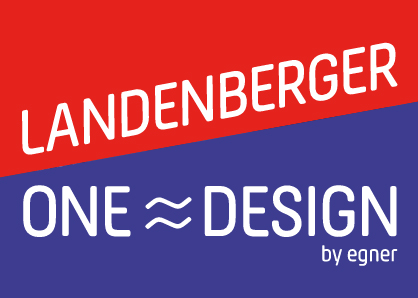
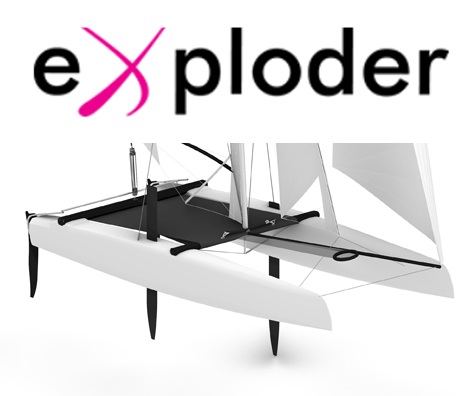
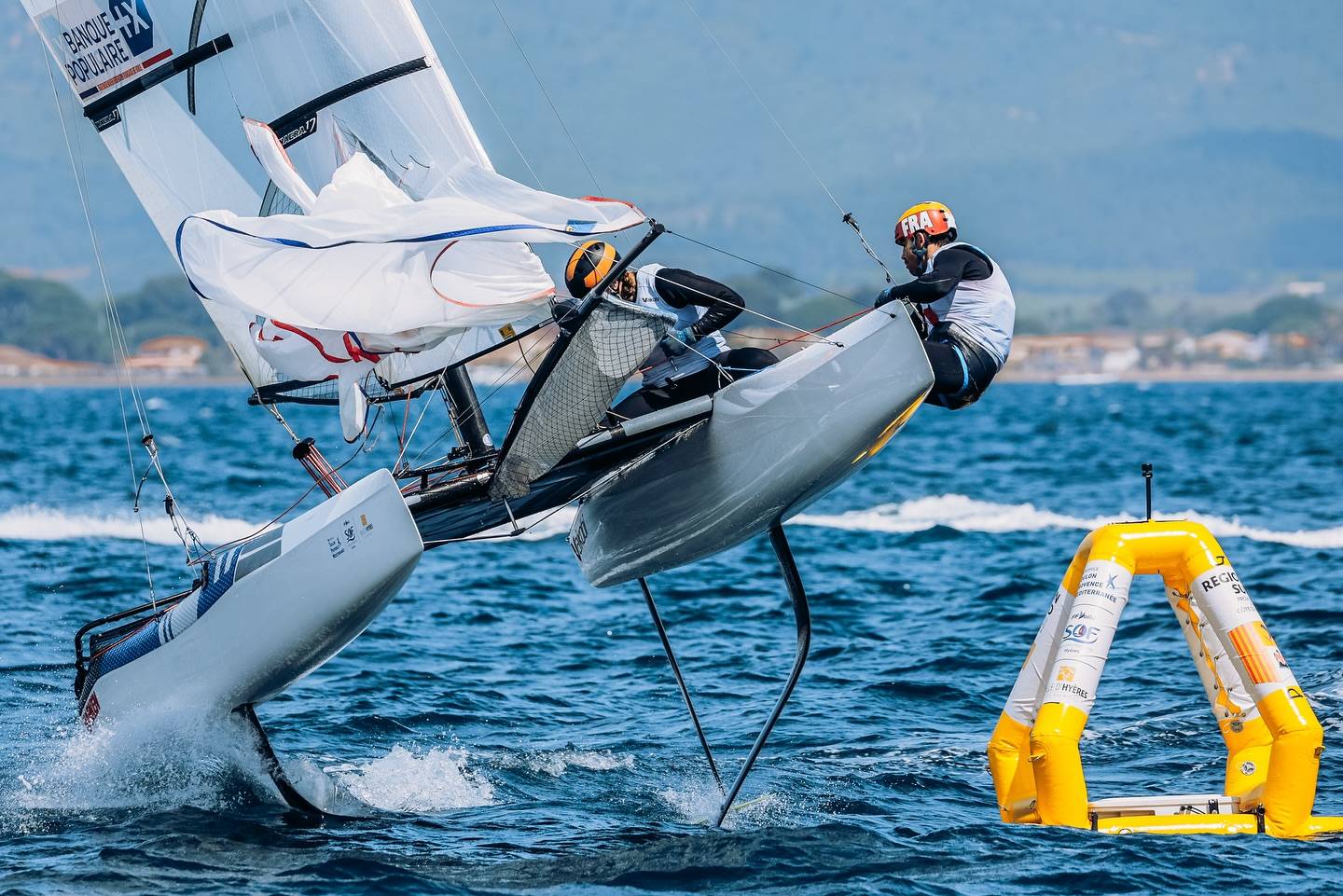


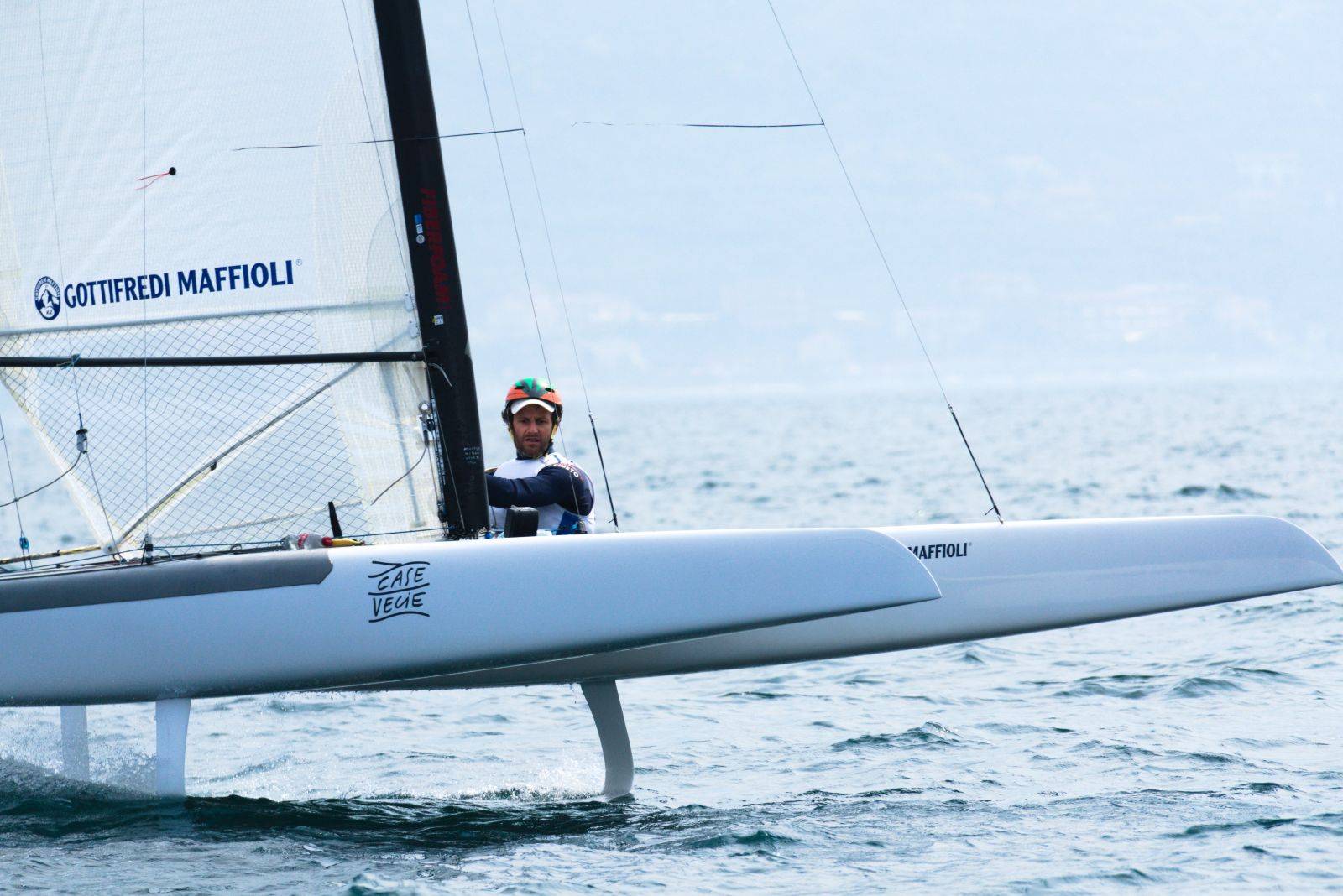
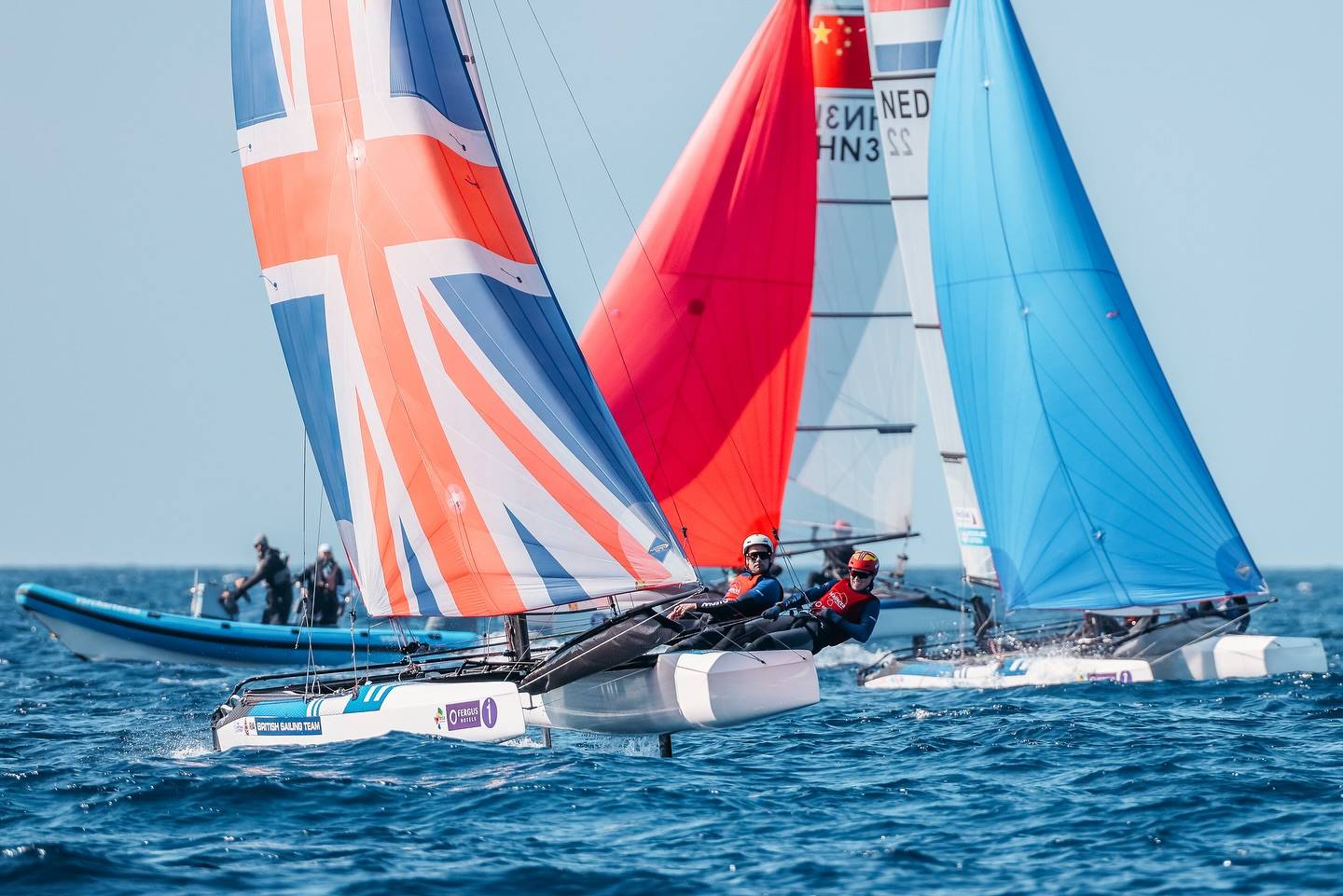
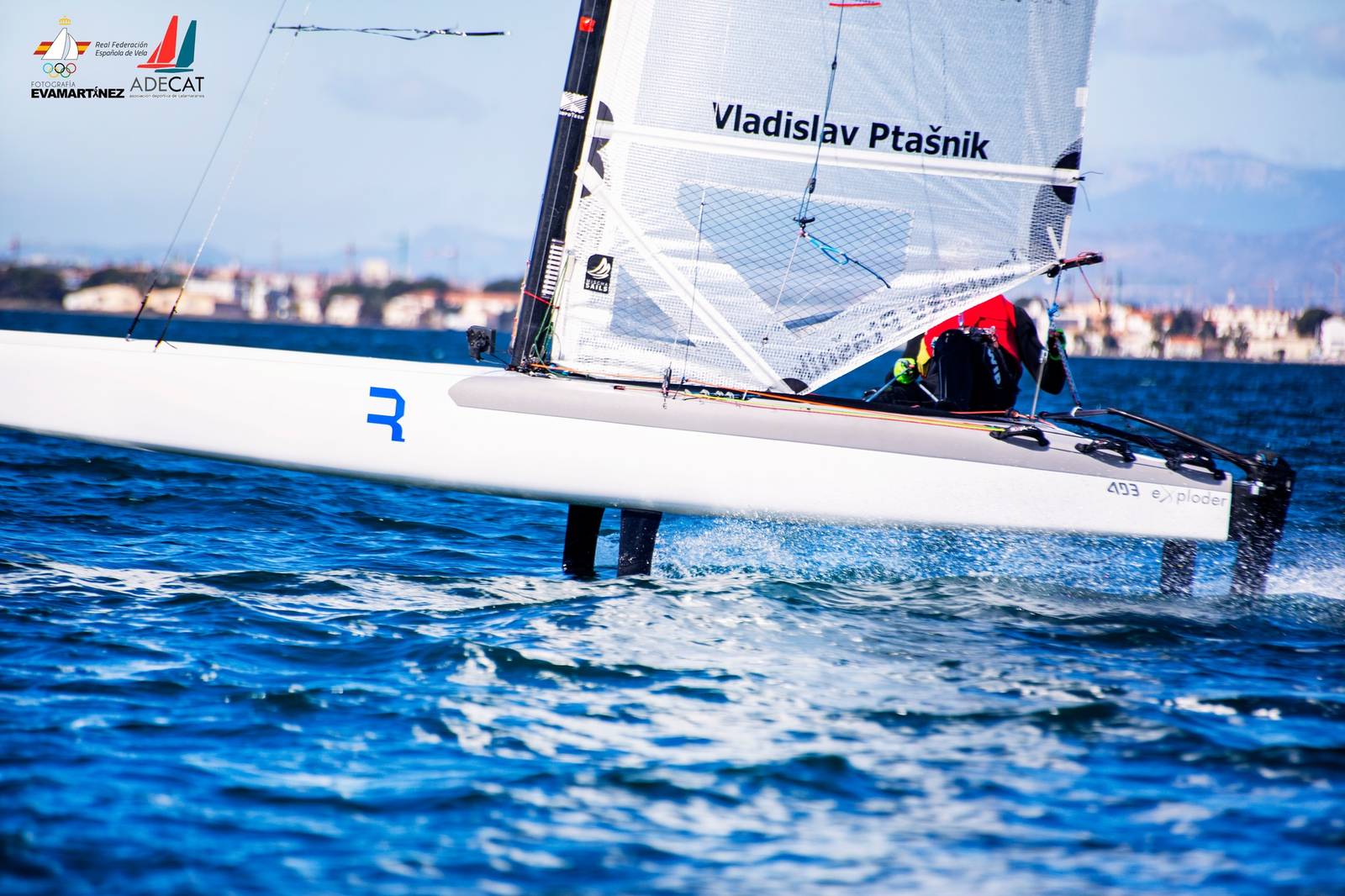
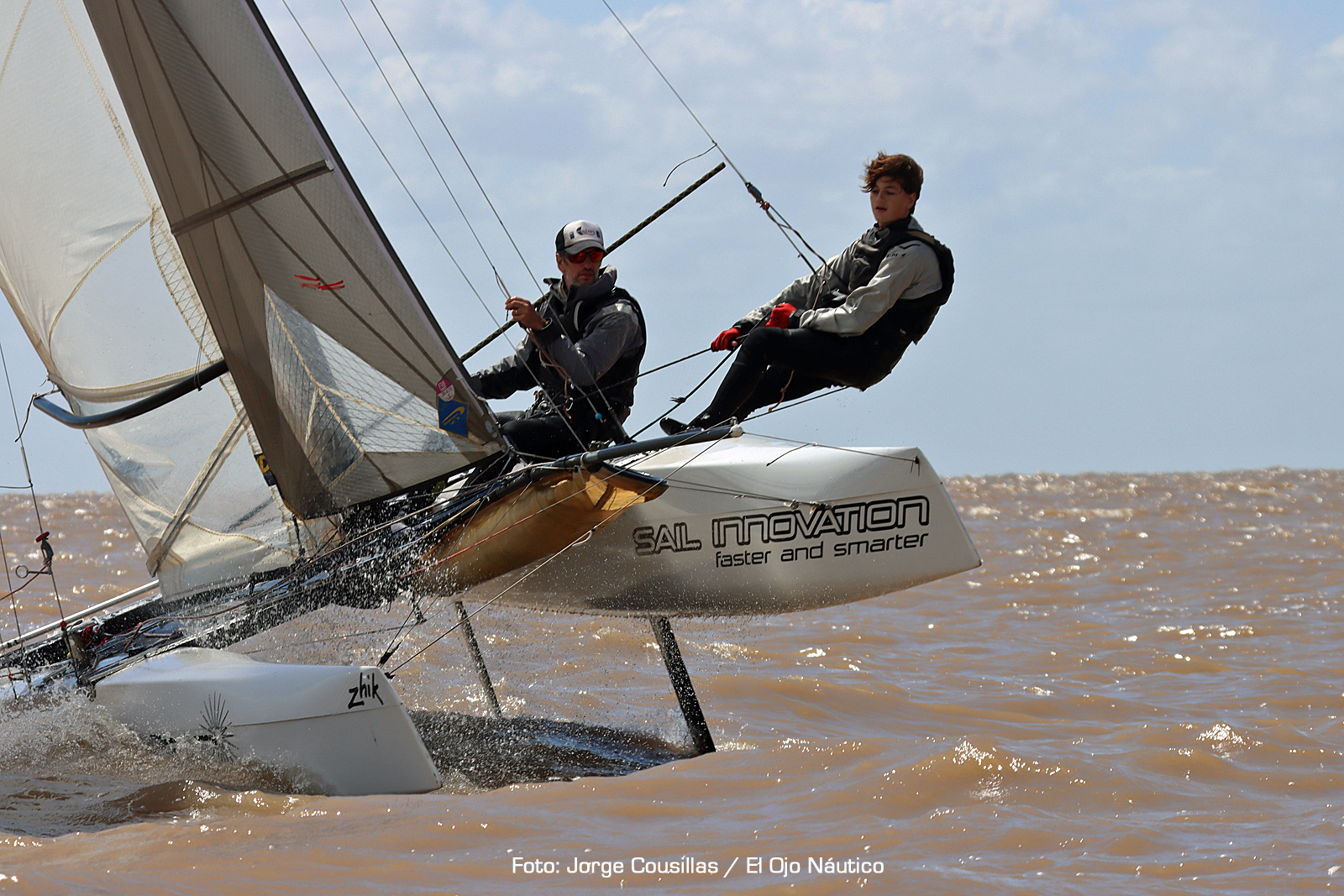
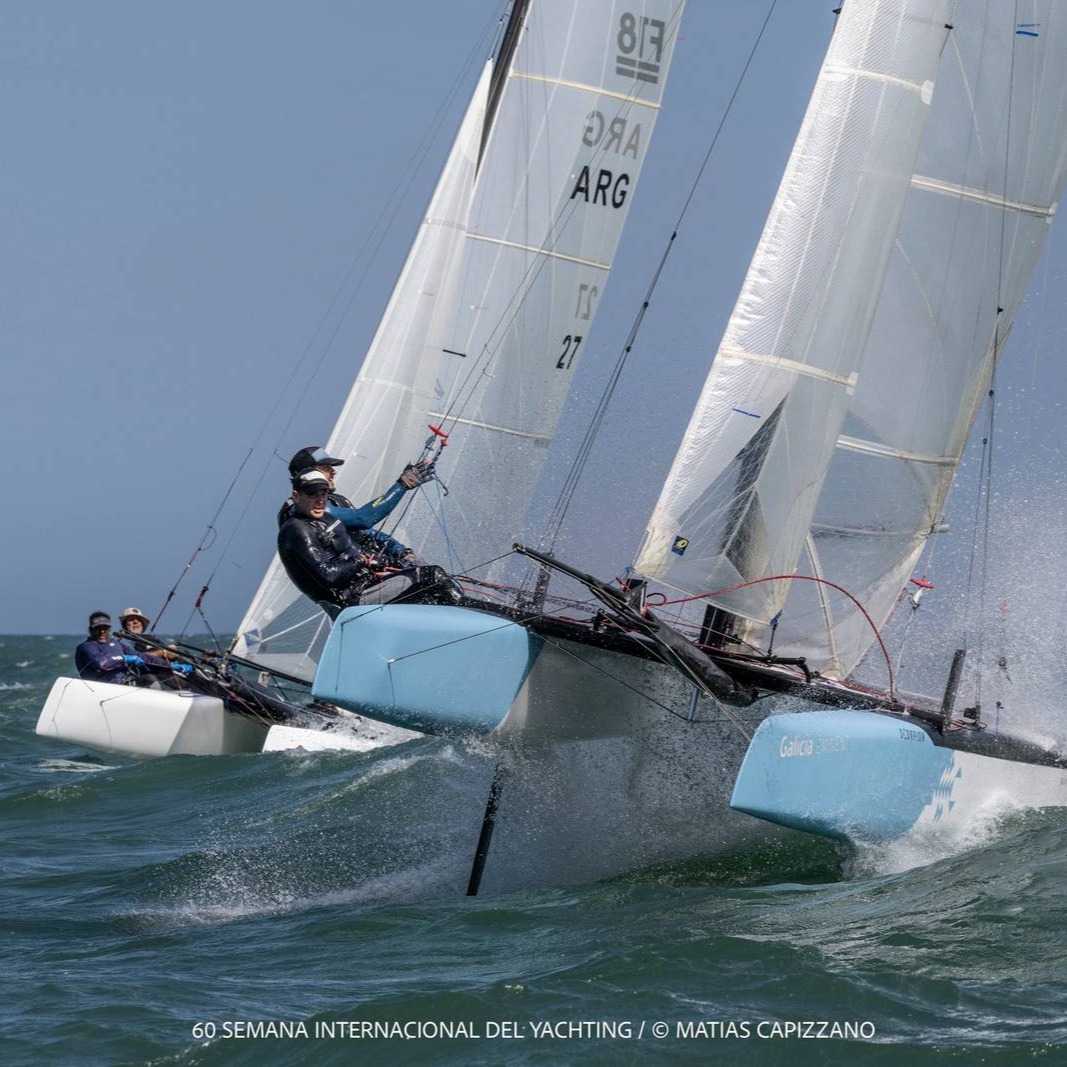
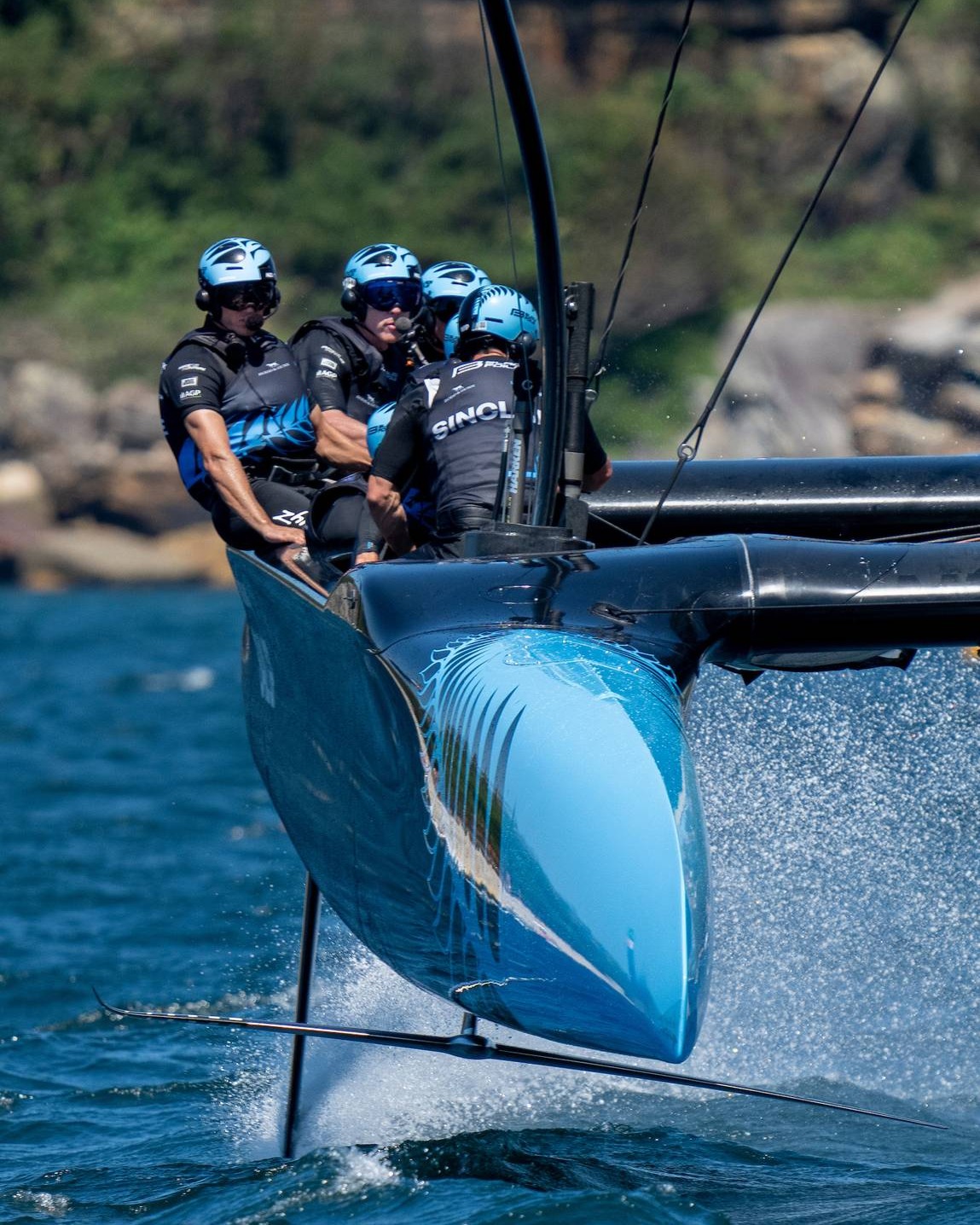













I just heard that my great sailing friend and former CEO of Hobiecat Europe has passed. May The endless oceans…
...Report was sent by an F18 Sailor, if you want Hobies reported send your own, we'll publish as usual. Cheers.
Looks like in your report the Hobies are not really present. Suggest to rewrite the article.
Thanks for the great report Wik. Great battle.
If I correctly read the results the overall winner this year is a Hobie16